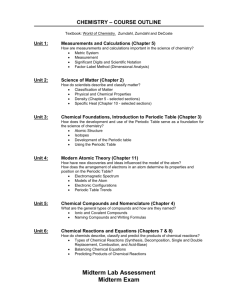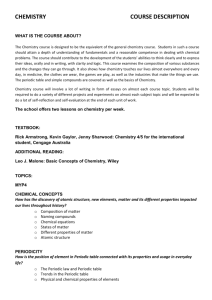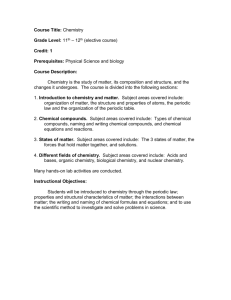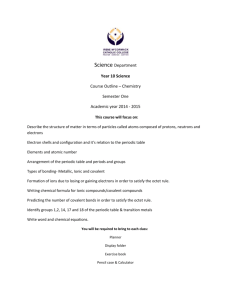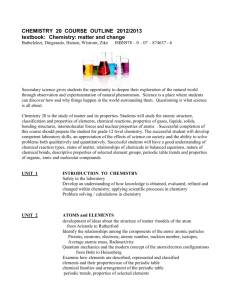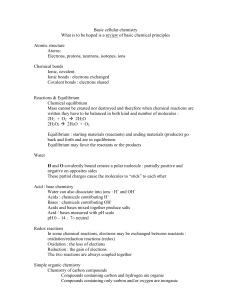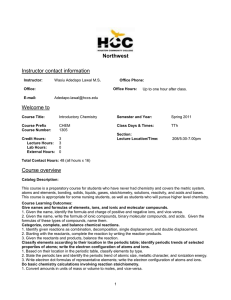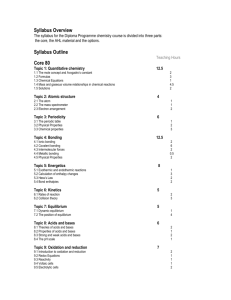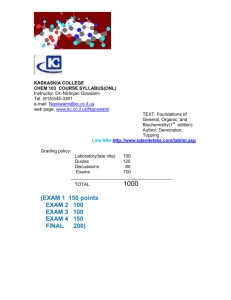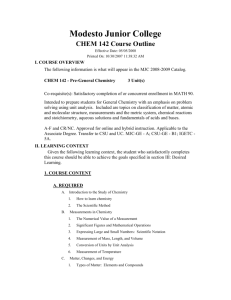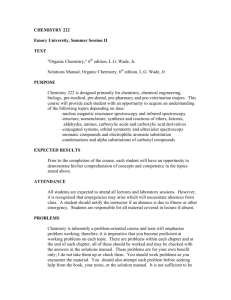College Prep Chemistry Syllabus
advertisement
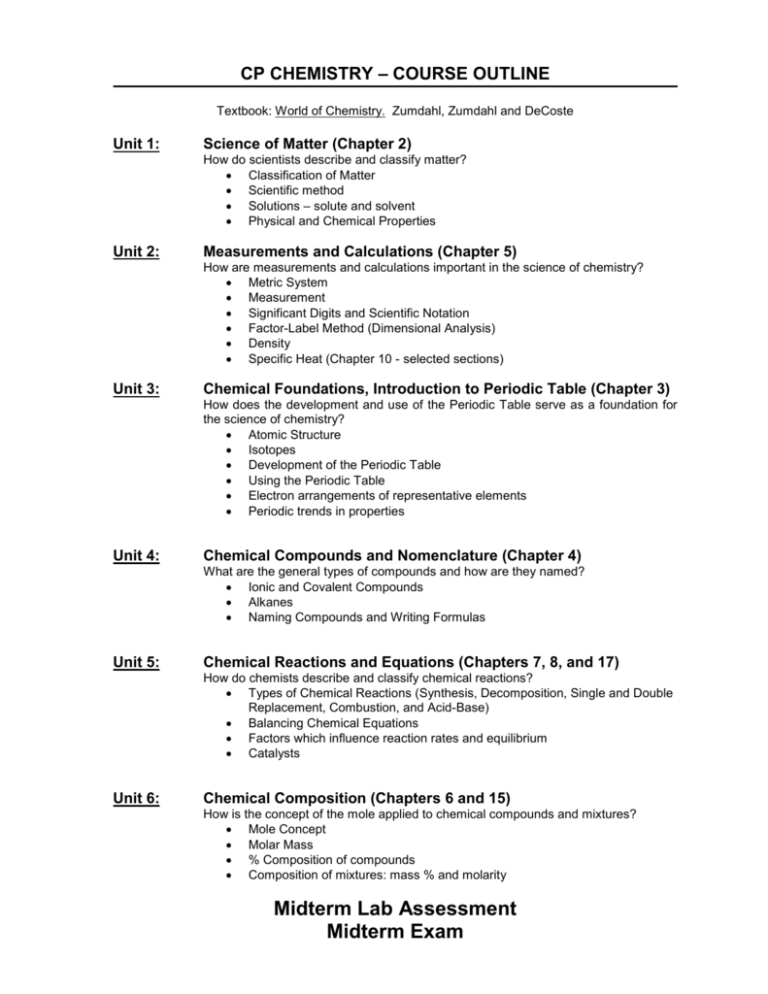
CP CHEMISTRY – COURSE OUTLINE Textbook: World of Chemistry. Zumdahl, Zumdahl and DeCoste Unit 1: Science of Matter (Chapter 2) How do scientists describe and classify matter? Classification of Matter Scientific method Solutions – solute and solvent Physical and Chemical Properties Unit 2: Measurements and Calculations (Chapter 5) How are measurements and calculations important in the science of chemistry? Metric System Measurement Significant Digits and Scientific Notation Factor-Label Method (Dimensional Analysis) Density Specific Heat (Chapter 10 - selected sections) Unit 3: Chemical Foundations, Introduction to Periodic Table (Chapter 3) How does the development and use of the Periodic Table serve as a foundation for the science of chemistry? Atomic Structure Isotopes Development of the Periodic Table Using the Periodic Table Electron arrangements of representative elements Periodic trends in properties Unit 4: Chemical Compounds and Nomenclature (Chapter 4) What are the general types of compounds and how are they named? Ionic and Covalent Compounds Alkanes Naming Compounds and Writing Formulas Unit 5: Chemical Reactions and Equations (Chapters 7, 8, and 17) How do chemists describe and classify chemical reactions? Types of Chemical Reactions (Synthesis, Decomposition, Single and Double Replacement, Combustion, and Acid-Base) Balancing Chemical Equations Factors which influence reaction rates and equilibrium Catalysts Unit 6: Chemical Composition (Chapters 6 and 15) How is the concept of the mole applied to chemical compounds and mixtures? Mole Concept Molar Mass % Composition of compounds Composition of mixtures: mass % and molarity Midterm Lab Assessment Midterm Exam Unit 7: Chemical Quantities (Chapter 9) How is the concept of the mole used to quantify chemical reactions? Stoichiometry (mass-mass, mass-volume, solution) Unit 8: Chemical Bonding and Molecular Geometry (Chapter 12) How are the different types of chemical bonds described and quantified? What factors determine the three-dimensional geometry of molecules? Model of Bonding Geometry of Molecules Ionic, Covalent, Polar Covalent Molecules and Bonding Unique properties of water Polarity Cohesion Adhesion Hydrogen bonds Hydrophobic/hydrophilic Unit 9: Phase Changes (Chapters 10 & 14) How does the Kinetic Theory describe the relationship between states of matter, energy, and temperature? States of Matter Kinetic Theory of Matter Heating/Cooling Curves Unit 10: Behavior and Chemistry of Gases (Chapter 13) How are the properties and reactions of gases described and quantified? Pressure units and conversions Boyles Law Charles Law Combined Gas Law Ideal Gas Law Dalton’s Law Unit 11: Acid, Bases and pH (Chapter 16) How do chemists describe the properties of acids and bases? Definitions of Acids and Bases Strength of Acids and Bases Dilutions pH, pOH Unit 12: Organic and Biological Chemistry (Chapters 20 and 21) How is the chemistry of carbon important in both industrial and living systems? Chemistry of carbon Functional groups Biological macromolecules (carbohydrates, lipids, proteins (peptide bonds), and nucleic acids) Dehydration synthesis and hydrolysis Photosynthesis and cellular respiration (reactions) Final Lab Assessment Final Exam
